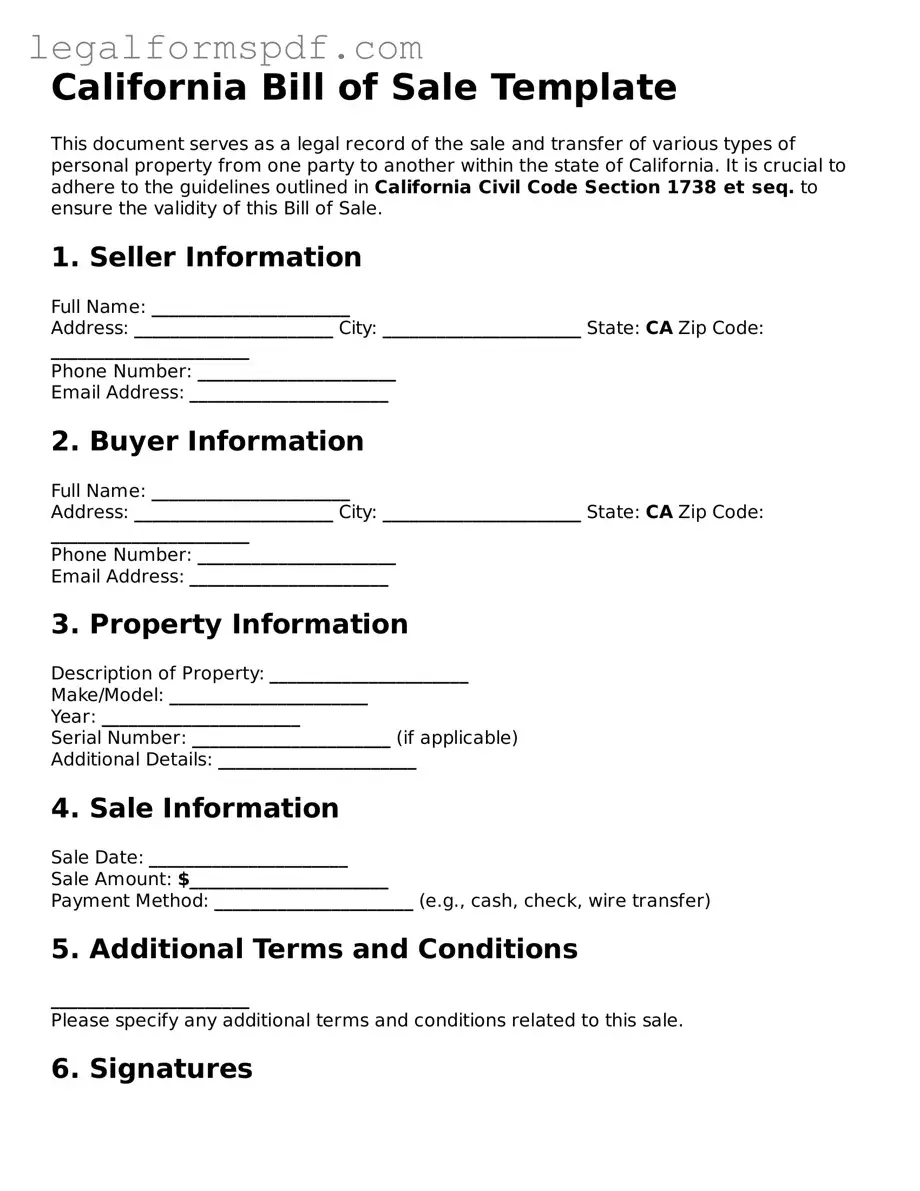California Bill of Sale Template
This document serves as a legal record of the sale and transfer of various types of personal property from one party to another within the state of California. It is crucial to adhere to the guidelines outlined in California Civil Code Section 1738 et seq. to ensure the validity of this Bill of Sale.
1. Seller Information
Full Name: ______________________
Address: ______________________ City: ______________________ State: CA Zip Code: ______________________
Phone Number: ______________________
Email Address: ______________________
2. Buyer Information
Full Name: ______________________
Address: ______________________ City: ______________________ State: CA Zip Code: ______________________
Phone Number: ______________________
Email Address: ______________________
3. Property Information
Description of Property: ______________________
Make/Model: ______________________
Year: ______________________
Serial Number: ______________________ (if applicable)
Additional Details: ______________________
4. Sale Information
Sale Date: ______________________
Sale Amount: $______________________
Payment Method: ______________________ (e.g., cash, check, wire transfer)
5. Additional Terms and Conditions
______________________
Please specify any additional terms and conditions related to this sale.
6. Signatures
Both parties agree that this Bill of Sale is under the jurisdiction of the State of California and all related legal proceedings, if any, shall be conducted therein. Each party acknowledges receipt of a complete copy of this document.
Seller's Signature: ______________________ Date: ______________________
Buyer's Signature: ______________________ Date: ______________________
Notary Public (If applicable):
Signature: ______________________ Date: ______________________
Commission Number: ______________________
